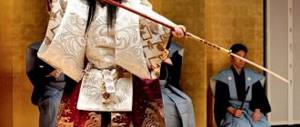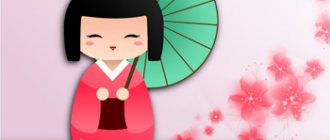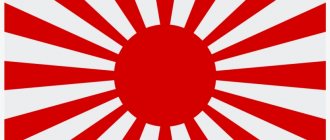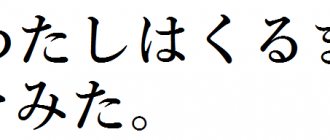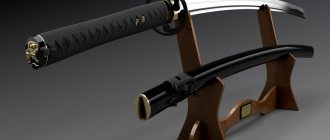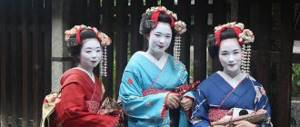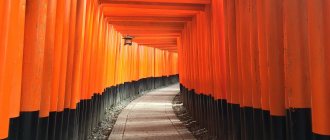Bunraku is a true cultural pearl of the Land of the Rising Sun. This is the name of the traditional puppet theater that appeared in Japan in ancient times. It, like other puppet theaters in the regions of the planet, developed independently and independently, therefore it has a number of specific differences from the performances to which we have become accustomed since childhood.
Traditional performances
The history of bunraku
Initially there were no dolls. The role of storytellers was played by artists and musicians traveling around Japan. They composed ballads about the royal family, brave wars, love and other eternal themes. Chants to the sounds of the shamisen (a three-stringed musical instrument somewhat reminiscent of a balalaika) were wildly popular, regularly attracting full houses.
Puppet shows began after there was a need to somehow diversify the stories and involve the audience in the narrative. This happened in the 17th century. And the name “bunraku” appeared only in 1805, when a man named Uemura Banrakuken purchased one of the theaters and decided to give it his name. After some time, “bunraku” became a household name. Now this is what all Japanese puppet theaters are called.
The dolls themselves deserve special attention. They were controlled using strings, and often two or three actors were responsible for the movements of one doll. This was done to “revive” the characters.
The figures were most often made from wood, after which the artists got to work and applied varnish. The costumes were also thought out to the smallest detail, as a result of which a good doll cost a lot of money and was treated with great care.
Puppet theaters in Osaka and Tokushima
The traditional Ningyōjōruri puppet theater attracted crowds in the 17th and 18th centuries and was one of the most popular forms of mass entertainment. It flourished especially in Osaka and Kyoto, but Awa Province (modern Tokushima Prefecture) was also a significant regional center for this art.
Awa Ningyō-jōruri theater play “Keisei Awa no Naruto” (“The Courtesan and the Whirlpools of Naruto”)
Sculpture of O-Yumi and O-Tsuru at the Jurobei estate
The Osaka Ningyō-jōruri theater is known as Bunraku, and the theaters that once played on three hundred stages throughout the island of Shikoku are called Awa ningyō-jōruri. The popularity of all these theaters declined significantly with the development of other forms of entertainment.
Amari Yoichiro is one of the few artists who still produces puppets for performances. Nippon.com staff visited his workshop in Tokushima.
Participants of the play
To organize a bunraku puppet show, you need:
- Actors who will control the doll (most often - three for each character).
- A reader narrating a story.
- Musicians who set the mood for the performance.
Only at first glance, it seems as if it is easy to control the doll. In fact, getting three people to work well together is a process that requires a huge amount of time and effort.
The legs are controlled by Ashi-zukai, the youngest of the puppeteers, but he, too, is forced to study for 10 (yes, you heard that right) years before appearing on stage.
But the most difficult thing, of course, is the head. Puppets in Japanese theaters have flexible facial expressions and, with the help of a puppeteer, can express any emotion. Omi-zukai is the name given to the person responsible for the doll's head. It takes 30 years to get such a position (training + work in secondary roles).
Woman scary in anger
Amari says making men's heads isn't too difficult. It is much more difficult to give expression to a woman's face. He showed us the head that will be used for the Kiyohime doll in the play Antin Kiyohime Densetsu (The Legend of Antin and Kiyohime). In the play, Kiyohime falls in love with a monk named Antin. He runs away from her, and when he takes a boat across the Hidakagawa River, she feels betrayed and rage boils within her. She throws herself into the river and swims after him, and there she turns into a huge snake.
The transformation of Kiyohime in the play “Antin Kiyohime densetsu” (“The Legend of Antin and Kiyohime”)
“Female characters are terrifying when they feel betrayed,” says the master. To show Kiyohime's transformation, he pulls the string and the doll's face transforms into an evil face. “That's what they become. This face must first be a cute female face, otherwise the effect will not be the same,” he explains.
Gidayu - reader
Surprisingly, if each doll is controlled by three people, then there is only one narrator (gidayu). This person voices all the characters, and is often also responsible for additional sounds (imitation of nature, gunshots, etc.). If he fails to cope with his duties, it will be quite difficult to follow what is happening on stage.
The most difficult thing about working as a gidayu is to match the movements of the puppets’ lips with your lines. At the same time, it is important to understand that he, like all the other actors, is on stage in front of the audience. Japanese puppet theaters do not have partitions behind which the workers hide, and a curtain is needed only to indicate the beginning/end of the performance. Yes, the Gidayu and their colleagues are dressed in black kimonos so as not to draw attention to themselves, but being on stage still creates additional difficulties.
Impact of new technologies
The workshop also has modern dolls. One of them is Kuidaore Taro, the Osaka mascot, stylized as a Bunraku doll.
Master Amari said that professors from Tokyo University and Keio University approached him with a request to make a doll. “They wanted to insert seven sensors into it - in the head, arms, neck, kimono and so on. I asked what they wanted to know, and they said that Bunraku dolls are more expressive than humans, and they wanted to measure the expressiveness that manifests itself in body and arm movements so that they can later use this knowledge to make robots. They have an amazing dream to use techniques that are already 400 years old in the latest technologies.”
O-Yumi, mother (left) and O-Tsuru, daughter (right) are characters from the play “Keisei Awa no Naruto” (“The Courtesan and the Whirlpools of Naruto”)
In this video, master Amari shows the structure and movements of some of his dolls. (Article in Japanese published on April 20, 2015. Source: interview with master Amari Yoichiro, conducted in his workshop in Tokushima, Tokushima Prefecture. Text by Harano Joji, photographs by Nakano Haruo. We express our gratitude to the Tokushima Prefecture Tourism Association and staff puppet theater "Awa Jurobei Yashiki" Tokushima Prefecture)
Bunraku today
The Japanese bunraku puppet theater continues to be popular even after the advent of cinema and other forms of entertainment. Except that performances now take place in regular theaters. The troupes of some theaters continue to tour and even travel abroad, but they do this only a few times a year.
It is possible to see bunraku performances in our country, but very rarely and only in large cities. Thus, if you want to visit a Japanese puppet theater, the easiest way to do this is during a trip to the Land of the Rising Sun.
The largest bunraku theater is located in the city of Osaka - this is the same institution that Uemura Banrakuken bought more than two hundred years ago.
<Japanese rickshaws Shodo - the art of Japanese calligraphy>
Japanese bunraku puppet theater
Author:
Galina
17:39 | 21.02.2017
Heading:
Culture and Religion
700
400
Traditional Japanese art cannot be imagined without puppet shows. This is a special type of performance that has its own amazing history and tradition. Japanese puppet theater - bunraku was born in the depths of the people. It acquired its current appearance by the middle of the 17th century. Along with other traditional theaters - kabuki and no, it is recognized as a UNESCO cultural heritage.
History of the theater
This type of traditional theater did not immediately become puppet theater. At first, wandering monks walked around the villages. They collected alms. And in order to attract the public, they sang ballads about Princess Joruri and other noble and equally unfortunate gentlemen. Then they were joined by musicians who were masters of playing the shamisen (an instrument with three strings). And later, artists appeared with dolls who illustrated the essence of the ballads to onlookers.
The word “joruri” is now used to describe every performance. It comes from the princess’s own name, the heroine of the most ancient play. It is voiced by a single reader called a gidayu. This term has also become a household word. In 1684, one of the commentators decided to take the name Takmoto Gidayu. This meant, in translation, “teller of justice.” The public liked this talented man so much that since then all bunraku singers have been named after him.
The main place in theatrical productions is given to puppets. The skill of the artists who manage them has been improved throughout the centuries that bunraku has existed. Researchers consider 1734 to be an important moment in the life of this art form. This is the date when Yoshida Bunzaburo came up with the technique of controlling puppets with three actors at once. Since then it has been like this. Each character is controlled by a trinity, merging into one organism with its hero for the duration of the performance.
By the way, the name bunraku itself also arose from its own name. In 1805, puppeteer Uemura Banrakuken acquired a famous theater that operated in the city of Osaka. He gave him his name. Over time, it turned into a common noun denoting Japanese puppet theater.
Main characters
Each production is created by a well-coordinated team consisting of: actors - three per character; reader - gidaya; musicians. The main characters are dolls. They have heads and arms of a complex structure, their size is comparable to that of a human: from half to two-thirds of the body of an ordinary Japanese. Only male characters have legs, and even then not always. The doll's body is just a wooden frame. She is decorated with rich robes, the swaying of which creates the appearance of walking and other movements. The youngest puppeteer, Ashi-zukai, controls the “legs”. To obtain qualifications and go on stage, this artist studies for ten years.
The doll's head is the most difficult object in all of bunraku. She has movable lips, eyes, eyebrows, eyelids, tongue, and so on, depending on the role. It and the right hand are controlled by omi-zukai. This is the main artist of the trio. He has been honing his skills for thirty years in junior roles. Hidari-zukai is used with the left hand. The trio demonstrates complete harmony of movements. It is impossible to understand from the actions of the doll that its body is controlled by different people.
Reader - gidayu
One person in bunraku voices all the characters. In addition, he narrates what is happening on stage. This actor must have rich vocal abilities. He reads his text in a special manner. Sounds fly out of his throat, as if a person is trying to hold them in, strangled and hoarse. It is believed that this is how the eternal conflict between “ninjo” and “giri” is expressed. This means: the hero’s feelings are oppressed by duty. He dreams of something, strives, but is constantly faced with the fact that he should do “the right thing.”
His words relating to the characters are amazingly repeated by the lips of the dolls in unison. It seems that they are the ones who pronounce the words. All the action is accompanied by unusual music. She occupies a special place in the presentation. The musicians create the rhythm of the action and emphasize the character of the scenes.
All the actors are on stage, and not hiding behind a partition, as in a European puppet theater. They are dressed in black kimonos. Thus, the viewer is invited to consider them invisible. In addition, the rear view of the stage is also curtained in black. The landscape is formed by rare decorative elements. All the attention of the public should be focused on the dolls.
Elements of dolls
The hands are also an interesting element; it’s not for nothing that they are controlled by two actors. They are mobile in all “joints”, like in humans. Each finger can bend or beckon. If a character needs to do something that a puppet hand is not capable of, for example, lifting a heavy object and throwing it, then the actor puts his hand into the sleeve and performs the necessary movement.
The face and hands are covered with white varnish. This allows you to focus the viewer’s attention on these elements. Moreover, the faces are disproportionately small. This way they feel more natural. Sometimes characters change faces as the scene progresses. It happens quickly and is prepared in advance. For example, there is a lady acting on stage who is a werewolf. The doll's head is equipped with two faces: beautiful and fox. At the right moment, the artist turns it 180 degrees, throwing over his head of hair.
Performances currently
In modern times, bunraku performances are held in ordinary theaters. The stage is designed in the appropriate tradition. The performance is woven into a harmonious performance of puppets, music and Gidayu songs. All the actors’ actions on stage are perfectly coordinated. The viewer immediately forgets that the doll is controlled by three people. Such harmony is achieved through long training. The head operator is usually an elderly person. Newcomers are not allowed to play this role in bunraku.
The main Japanese puppet theater is still located in Osaka. The troupe tours Japan five or more times a year, sometimes traveling abroad. After 1945, the number of bunraku troupes in the country dropped to less than forty. Puppetry began to disappear. Nowadays there are several semi-amateur groups. They give performances and attend traditional art festivals.
